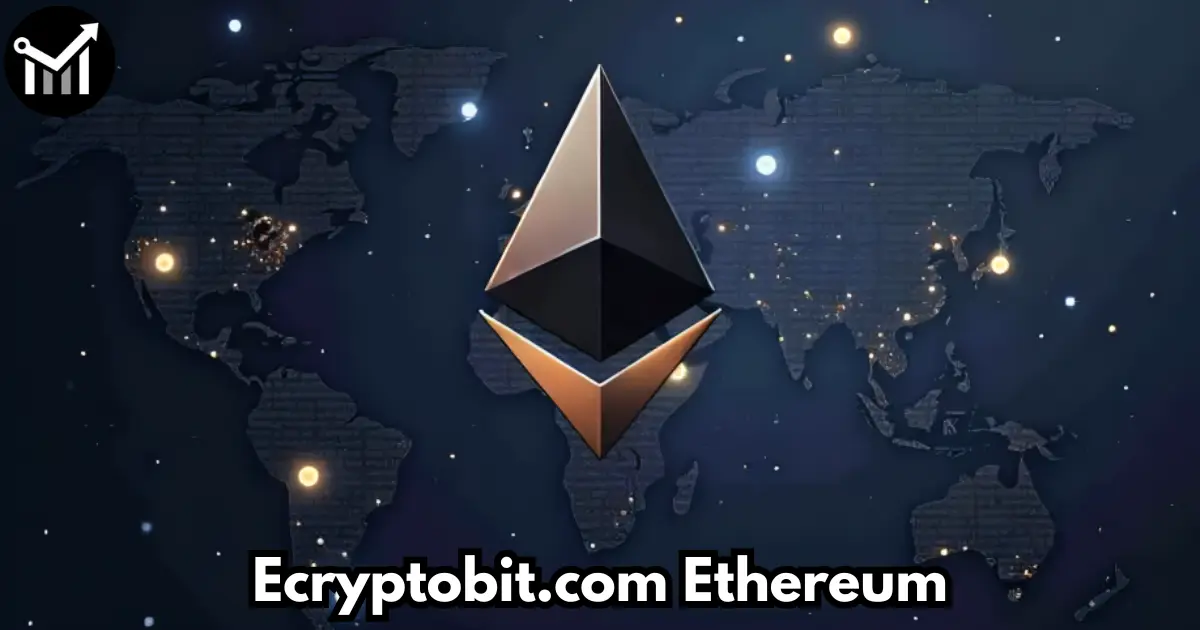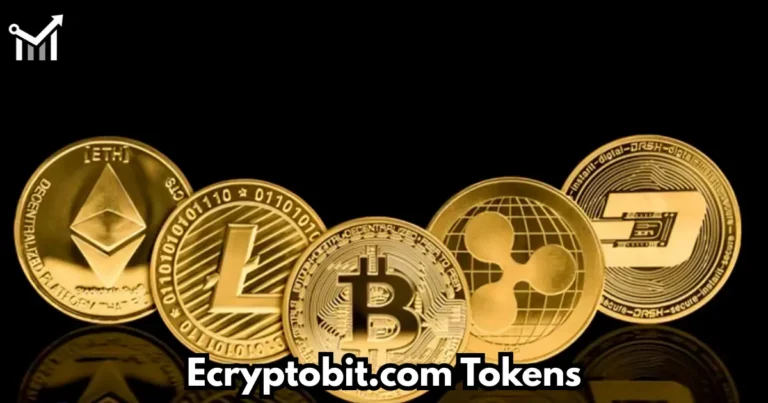Are you ready to dive into the future of decentralized finance and smart contracts? Whether you’re a crypto enthusiast or just beginning to explore blockchain technology, Ethereum has likely captured your attention. As the second-largest cryptocurrency by market cap, Ethereum has revolutionized how we think about digital assets and blockchain innovation. Now, with platforms like ecryptobit.com offering streamlined access to Ethereum insights, trading, and trends, understanding this digital asset is more important than ever.
Launched in 2015 by Vitalik Buterin and a group of visionary developers, Ethereum brought something radically different to the blockchain ecosystem—programmability. Unlike Bitcoin, which is designed primarily as digital gold or a store of value, Ethereum enables developers to build decentralized applications (dApps), DeFi protocols, and NFTs using smart contracts. Over the years, Ethereum has become the foundation for countless blockchain-based innovations, including Uniswap, Chainlink, OpenSea, and more.
This article explores everything you need to know about ecryptobit.com Ethereum—from what Ethereum is and how it works to why ecryptobit.com is one of the best platforms to engage with Ethereum. We’ll break down the history, technology, use cases, investment potential, and future outlook, all while optimizing for SEO so you can stay ahead of the digital curve.
What Is Ethereum?
A Smart Contract Platform That Changed the Game
Ethereum is an open-source, decentralized blockchain platform that allows developers to build and deploy smart contracts. Smart contracts are self-executing programs that run when certain conditions are met. This innovation eliminated the need for intermediaries in agreements, contracts, and even financial transactions.
Key Features of Ethereum
- Smart Contracts: Code that automates agreements.
- Ether (ETH): The native cryptocurrency used to pay for transactions and computational services.
- Ethereum Virtual Machine (EVM): The runtime environment that processes smart contracts.
- dApps: Decentralized applications built on Ethereum’s infrastructure.
According to CoinMarketCap, Ethereum’s market capitalization consistently ranks second only to Bitcoin, underscoring its importance in the broader crypto ecosystem.
ecryptobit.com: Your Gateway to Ethereum
Why Choose ecryptobit.com for Ethereum?
ecryptobit.com is a fast-growing crypto hub that offers real-time analysis, investment tools, educational resources, and Ethereum trading insights. Whether you’re a beginner or an experienced trader, ecryptobit.com simplifies your journey into Ethereum’s ecosystem by offering:
- Live ETH price charts and historical data
- Guides and tutorials on using Ethereum
- Market sentiment indicators
- News and updates about Ethereum developments
- Integration with popular crypto wallets and exchanges
Trusted Information and Analytics
ecryptobit.com is committed to providing reliable and up-to-date Ethereum information, helping users make informed investment decisions. The platform uses AI-powered analytics and a user-friendly interface to bring you Ethereum trends, gas fee estimates, token swaps, and ETH staking opportunities in one place.
Ethereum’s Transition to Proof-of-Stake (PoS)
From Proof-of-Work to Proof-of-Stake
One of Ethereum’s most significant recent developments is The Merge, which occurred in September 2022. This update transitioned Ethereum from a proof-of-work (PoW) to a proof-of-stake (PoS) consensus mechanism.
What Changed?
- Energy Efficiency: PoS reduced Ethereum’s energy usage by over 99%.
- Validator Nodes: Instead of miners solving complex puzzles, validators now secure the network by staking ETH.
- Security and Scalability: The shift paves the way for future scalability upgrades like sharding.
Impact on Users and Investors
- Staking Rewards: ETH holders can now earn passive income by staking.
- Lower Gas Fees (In Future): Though not immediate, PoS is a step toward lowering transaction costs.
- Increased Network Activity: Developers are building more dApps as the network becomes more efficient.
ecryptobit.com offers easy-to-read explanations, news, and tools to help users benefit from Ethereum’s evolving consensus model.
Use Cases of Ethereum
Decentralized Finance (DeFi)
DeFi has become one of Ethereum’s most powerful use cases, with protocols handling over $50 billion in total value locked (TVL) as of mid-2025.
Popular DeFi platforms on Ethereum:
- Uniswap: Decentralized exchange
- Aave: Lending and borrowing platform
- MakerDAO: Stablecoin governance and lending
Non-Fungible Tokens (NFTs)
Ethereum is the home of the NFT explosion. Projects like Bored Ape Yacht Club and CryptoPunks have made Ethereum the go-to chain for digital art and collectibles.
DAOs and Governance
Ethereum allows for Decentralized Autonomous Organizations—blockchain-based groups governed by token holders without centralized leadership.
Use cases include:
- Protocol governance
- Crowdfunding projects
- Community decision-making
Real-World Applications
Ethereum is now being explored for:
- Supply chain management
- Healthcare data security
- Gaming (Play-to-Earn models)
- Digital identity solutions
Ethereum Investment Outlook
Why Investors Are Bullish on ETH
Ethereum is more than just a cryptocurrency—it’s a foundational layer for the future of Web3. Institutional investors, retail traders, and even governments are paying attention.
Key reasons to consider ETH:
- Strong developer ecosystem
- High liquidity
- Widespread adoption
- Interoperability with other blockchains
Price Performance & Forecasts
As of June 2025, Ethereum trades around $3,200, having rebounded strongly from past bear markets. Analysts project that with continued network growth and Layer 2 adoption, ETH could surpass $5,000–$7,000 in the next bull cycle.
ecryptobit.com tracks Ethereum’s price predictions using historical trends, on-chain analysis, and sentiment indicators, helping users forecast market movements with confidence.
Navigating the Ethereum Ecosystem on ecryptobit.com
Features That Help You Stay Ahead
On ecryptobit.com, users can access:
- Ethereum gas fee calculators
- Live staking dashboards
- Ethereum wallet guides
- Smart contract explorers
- dApp directories
These tools give users the ability to:
- Monitor and optimize transactions
- Choose cost-effective times to interact with the network
- Understand which dApps are trending
- Make informed investment decisions
Wallets and Security
ecryptobit.com partners with secure wallets like:
- MetaMask
- Ledger
- Trust Wallet
These integrations help users safeguard their ETH holdings and interact safely with the Ethereum blockchain.
Common Ethereum Terms Explained
Helpful Glossary
- Gas Fee: The cost to perform operations on Ethereum.
- Layer 2: Solutions built on top of Ethereum to increase speed and reduce costs (e.g., Arbitrum, Optimism).
- Smart Contract: Code that runs autonomously on the blockchain.
- ETH: The native token of Ethereum.
- Node: A computer that helps maintain the Ethereum network.
ecryptobit.com offers an Ethereum Glossary section with quick definitions and use cases for beginners.
The Future of Ethereum
Ethereum 2.0 and Beyond
Ethereum’s roadmap includes:
- Sharding: Breaking the network into smaller pieces to scale efficiently.
- Verkle Trees: Advanced cryptographic structures for reducing data storage.
- Stateless Clients: Nodes that don’t need to store the entire Ethereum state.
These upgrades are expected to make Ethereum:
- More scalable
- Cheaper for users
- Easier for developers
Role in Web3 and AI Integration
Ethereum is also playing a critical role in powering the Web3 revolution, a decentralized version of the internet. Innovations like tokenized AI services, decentralized storage, and AI-powered DeFi protocols are being built on Ethereum. ecryptobit.com frequently covers these breakthroughs, keeping users up-to-date on how Ethereum intersects with emerging technologies.
FAQs
1. What is Ethereum and how is it different from Bitcoin?
Ethereum is a decentralized blockchain platform that enables smart contracts and decentralized applications (dApps), whereas Bitcoin is primarily a digital currency designed for peer-to-peer transactions. Ethereum’s programmability allows developers to create DeFi platforms, NFTs, and much more—making it more versatile than Bitcoin.
2. What is Ether (ETH)?
Ether (ETH) is the native cryptocurrency of the Ethereum network. It is used to pay gas fees for transactions and smart contract execution. It also functions as a store of value and can be staked to earn rewards after Ethereum’s shift to Proof-of-Stake.
3. Is Ethereum a good investment in 2025?
Many analysts consider Ethereum a strong long-term investment due to its robust ecosystem, active development, and wide adoption in DeFi, NFTs, and Web3. However, like any crypto asset, it carries market risk. ecryptobit.com provides live analysis and expert insights to guide your decision-making.
4. How can I buy Ethereum on ecryptobit.com?
ecryptobit.com integrates with trusted exchanges and wallets, allowing you to buy ETH securely. Simply connect a wallet like MetaMask, select your payment method, and follow the platform’s guide to complete your purchase.
5. What are Ethereum gas fees and how can I reduce them?
Gas fees are transaction costs paid in ETH to use the Ethereum network. Fees vary based on network congestion. You can reduce gas fees by:
- Using Layer 2 solutions (like Arbitrum or Optimism)
- Transacting during off-peak hours
- Using ecryptobit.com’s gas fee estimator to time your actions
6. What is Ethereum staking and how do I start?
Ethereum staking involves locking up your ETH to help secure the network and earn rewards. After the Merge, Ethereum now uses Proof-of-Stake, enabling users to become validators or stake via a pool. ecryptobit.com offers tutorials and staking dashboards to get started safely.
7. Can I build my own dApp on Ethereum?
Yes! Ethereum is open-source and developer-friendly. It supports Solidity programming and has extensive documentation. ecryptobit.com offers links to developer resources and highlights new dApps being built on the platform.
8. What’s the difference between Ethereum and Ethereum 2.0?
“Ethereum 2.0” refers to a series of upgrades to make the network more scalable and secure. Key changes include the switch to Proof-of-Stake, the future introduction of sharding, and the overall improvement of network performance. These changes have been implemented gradually since 2022.
9. Is Ethereum safe to use?
Yes, Ethereum is considered secure, but you must follow best practices—such as using trusted wallets, avoiding phishing scams, and not sharing private keys. ecryptobit.com offers educational guides on wallet safety and secure Ethereum usage.
10. Where can I track Ethereum prices and news?
You can track real-time Ethereum prices, charts, news updates, and analytics tools directly on ecryptobit.com. The platform provides 24/7 market coverage, expert insights, and Ethereum ecosystem news.
Read More: ecryptobit.com NFT Guide: Buy, Sell, and Create Easily
Conclusion
Ethereum is much more than a cryptocurrency—it’s an ecosystem that powers innovation across finance, governance, gaming, art, and beyond. As it continues evolving through upgrades like PoS, sharding, and Layer 2 solutions, Ethereum is cementing its position as the foundation of decentralized technology.
Whether you’re an investor, developer, or simply a curious learner, ecryptobit.com Ethereum gives you the tools, knowledge, and market insights you need to make the most of this groundbreaking platform. Stay informed, explore new dApps, manage your ETH safely, and participate in shaping the future of Web3.




